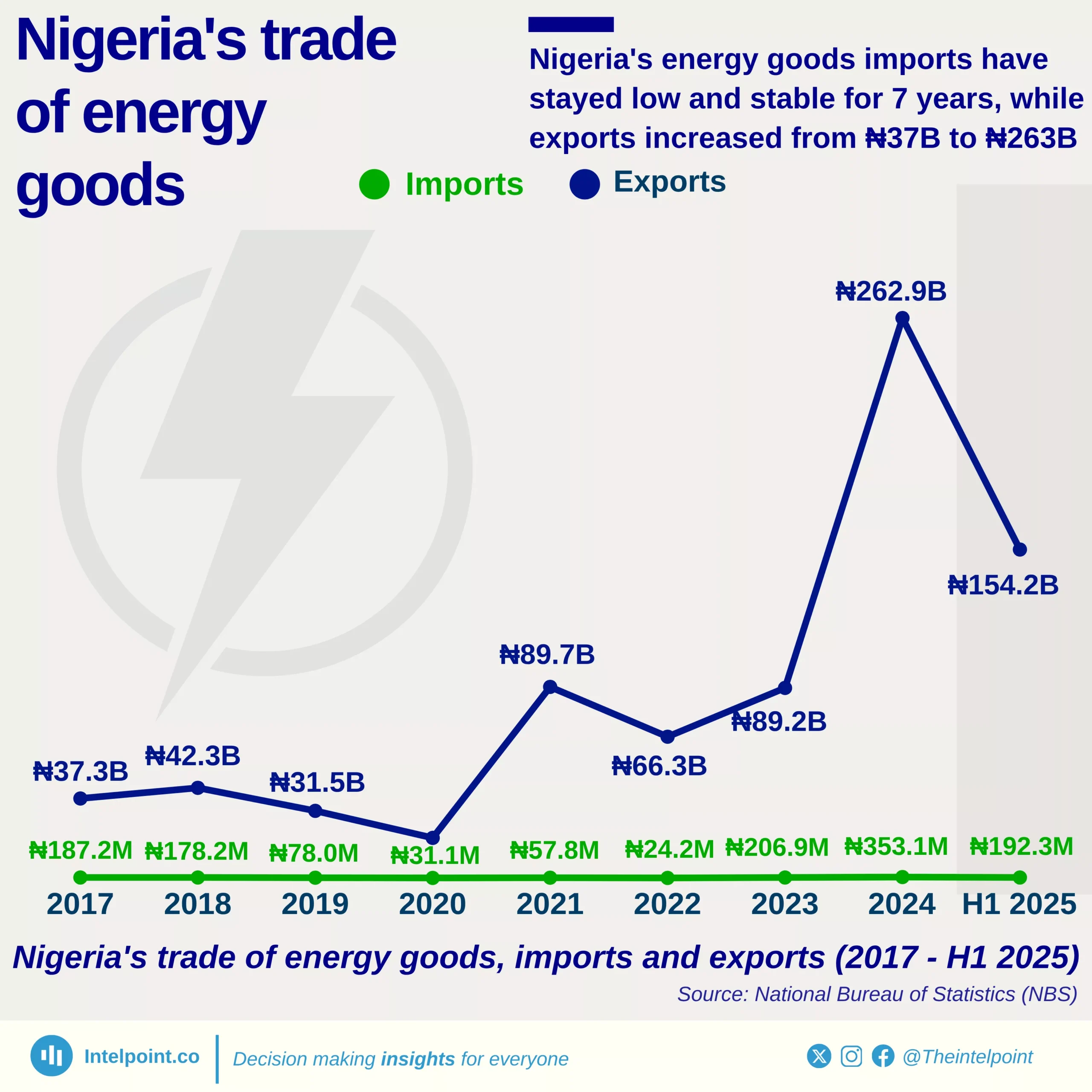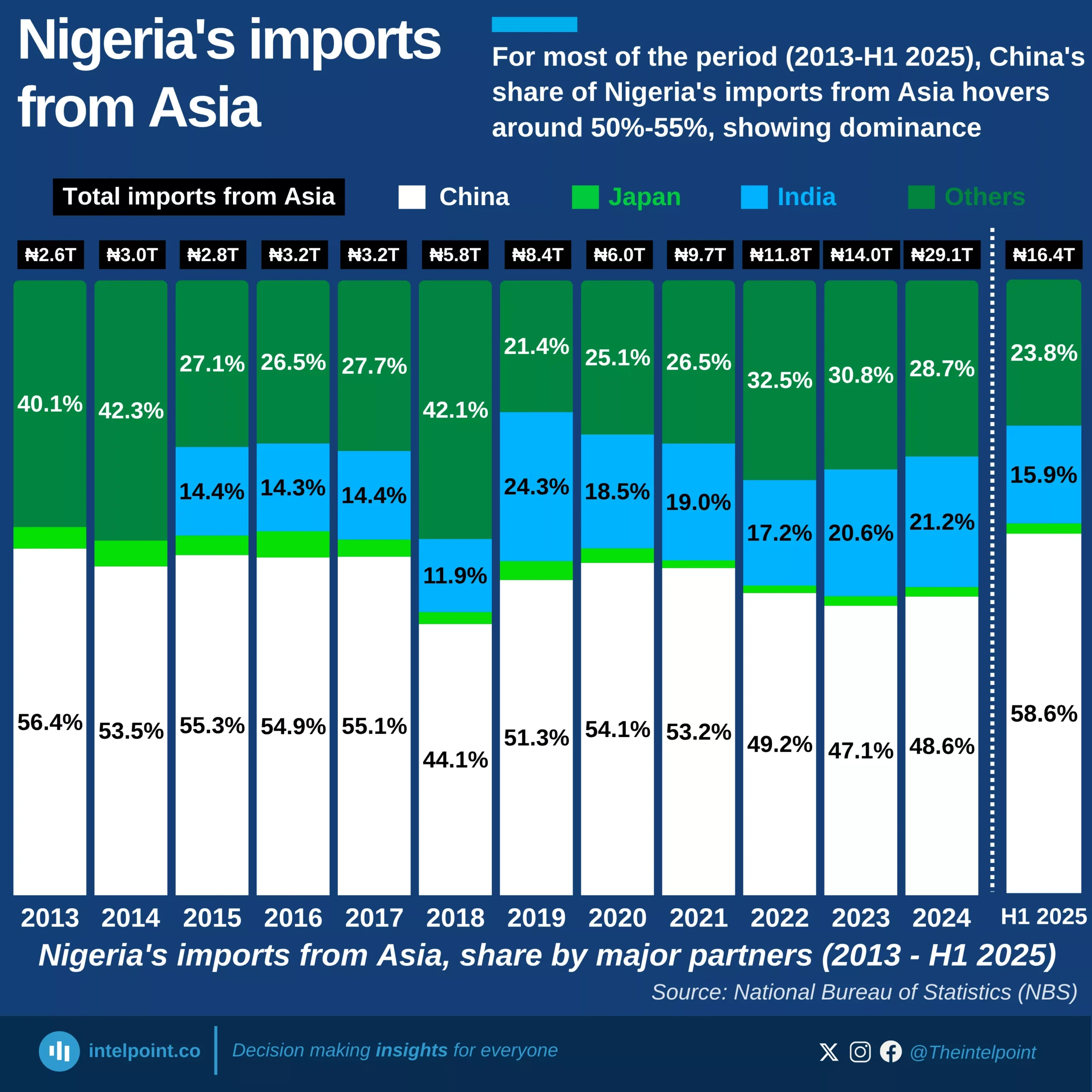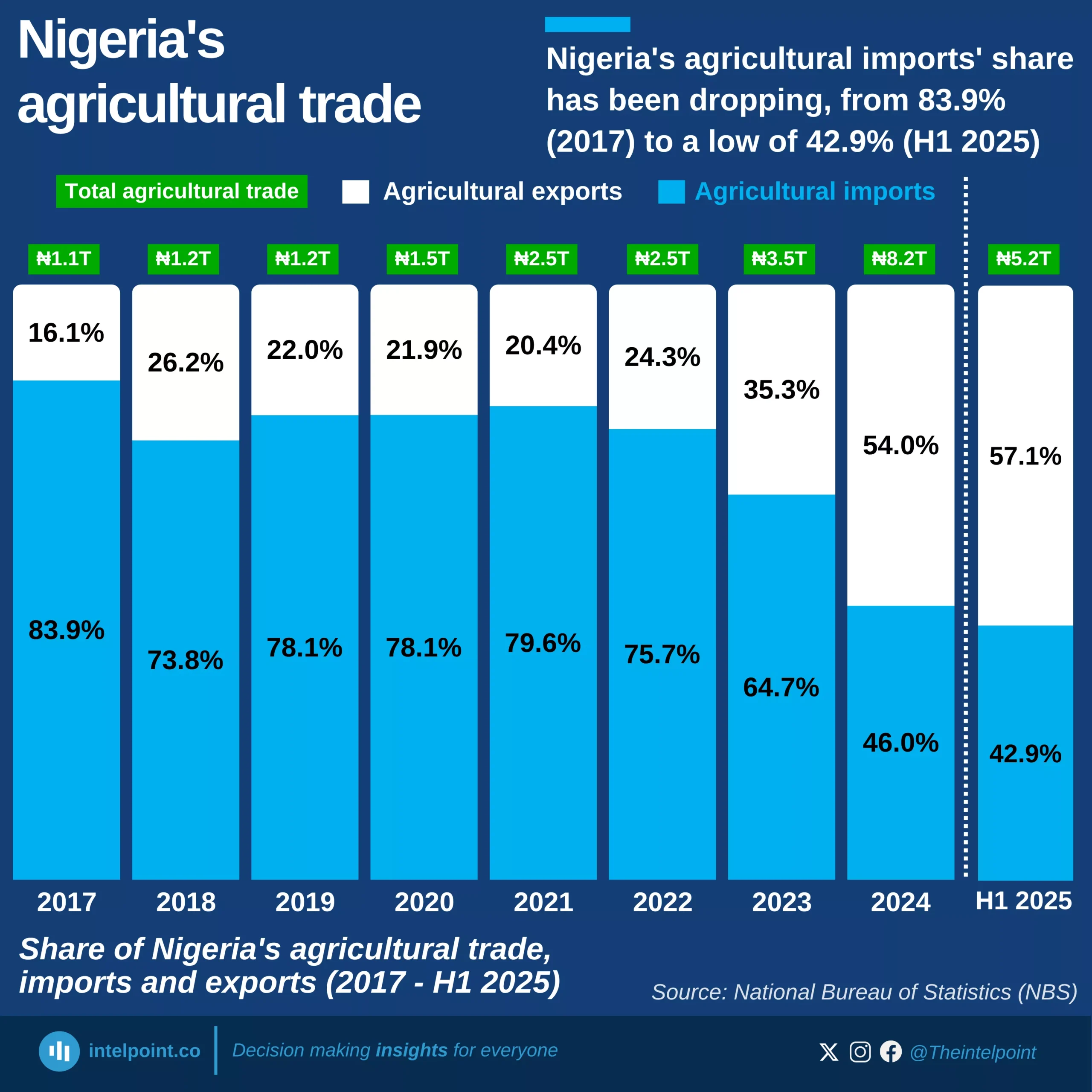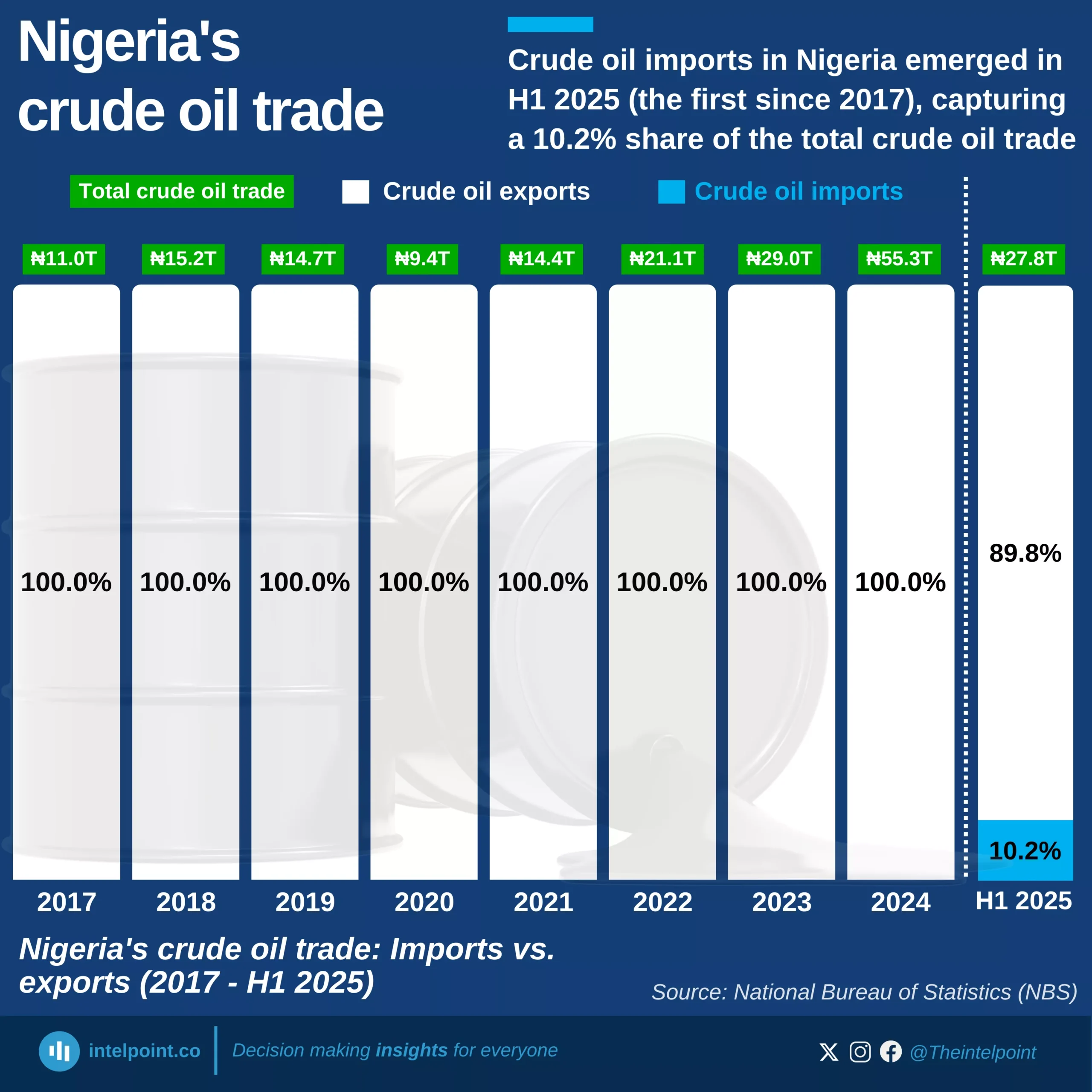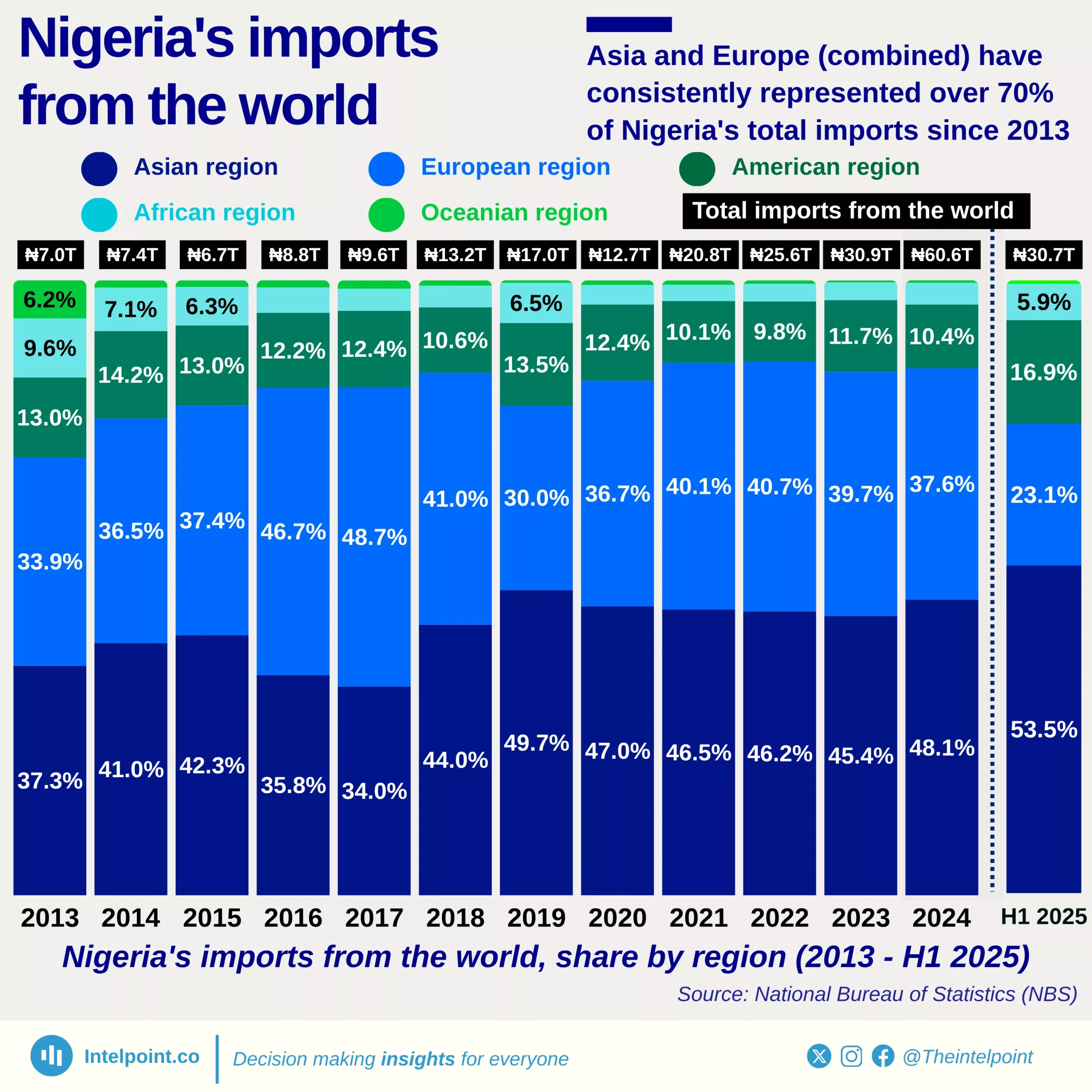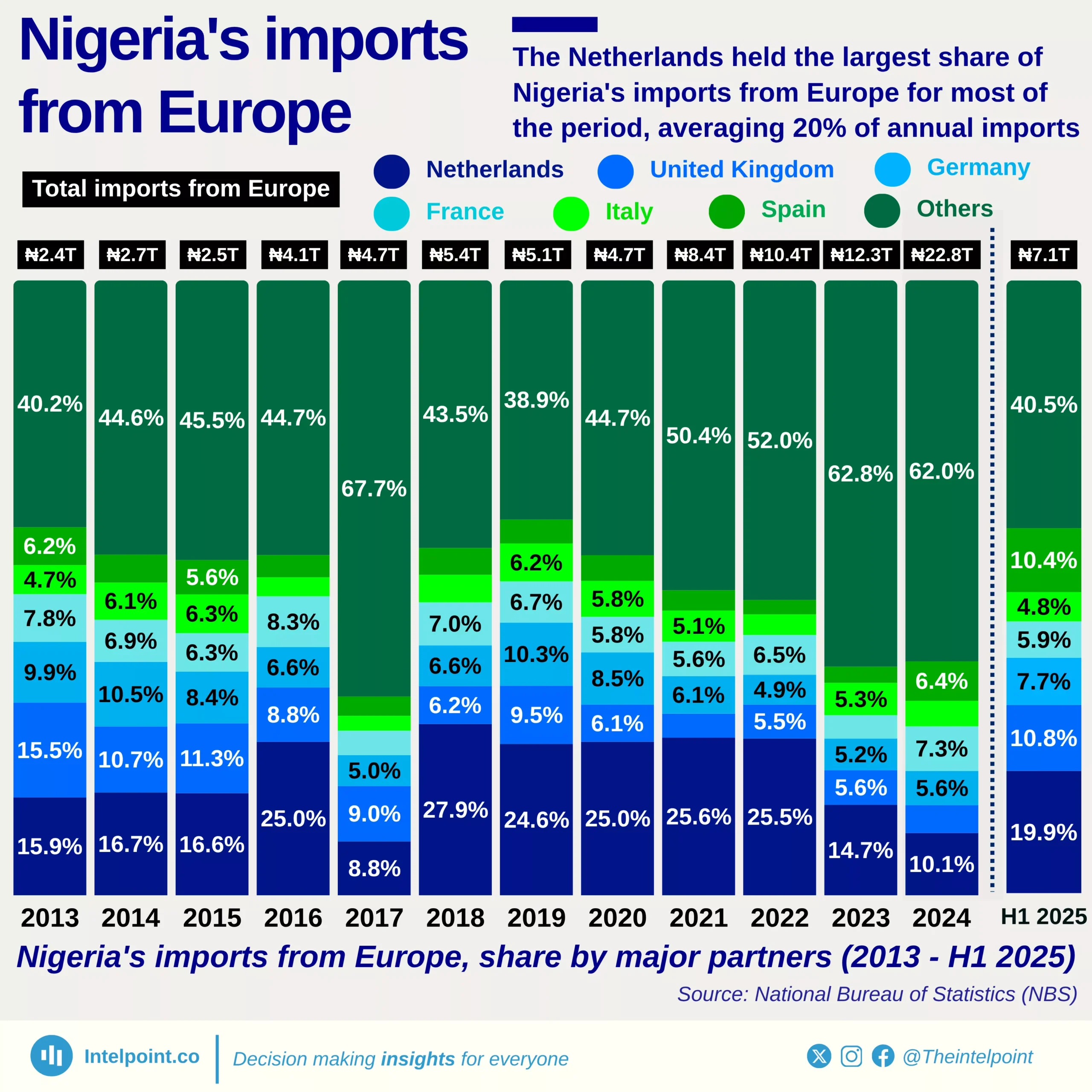Key Takeaways:
In 2024, the United States imported $5.70 billion worth of goods from Nigeria, with petroleum products maintaining their historical dominance in the trade relationship. Mineral fuels and oil products accounted for $5.28 billion of total imports from Nigeria.
Despite this heavy dependence on oil, there are signs of export diversification. Fertilisers emerged as the second most valuable export category at $139.41 million, followed by lead products at $78.17 million. These non-oil sectors, along with various other industrial and agricultural products, collectively contributed approximately $423 million to the trade balance.
